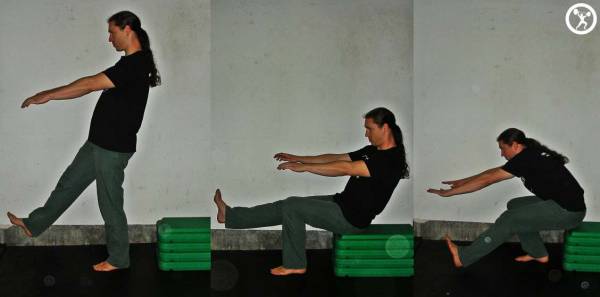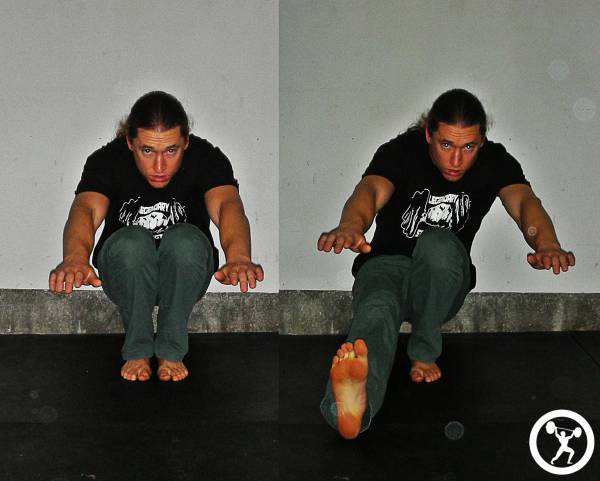The pistol is one of the best bodyweight exercises for leg training. Even the average person can work up to repping out two-legged squats with just a bit of training, and that‘s a good place to start. But one-legged squats take a bit of dedicated work.
To do the pistol, start from a standing position and extend one leg out in front of you. You will keep this leg hovering above the ground for the entire duration of the exercise. With the working leg, you descend into a full squat and come back up. If you’ve never tried this before, then you’ll discover that to master the pistol takes quite a bit of flexibility, strength, and balance.
As a skill that the majority of people cannot do, when you pull pistols off – especially if you can do them with ease – you may get gasps of amazement and cheers. Move onto some of the more advanced variations of the pistol – like jumping versions, weighted versions and more – and you’re even more likely to have this happen. Sounds fun, right?
In this article I’m going to give you the steps necessary to achieve your first pistol. As a head’s up, let me start off by saying that most people who have been training for some time will have sufficient strength to be able to do this movement. But that’s not what holds most people back. The biggest stumbling block is the flexibility required to do this movement. To build that flexibility here are two great approaches:
Pistol Drill #1: One-Legged Box Squats
The best way to build the required flexibility for regular squats is by using a box. This is a common drill used by many personal trainers with their clients, since few people have the ability to do a full squat (at least in the parts of the world where sitting in chairs is common). By working with boxes of different heights, you can train the movement pattern, and gradually, progressively, get down to the ass-to-grass position.

The pistol can be trained in exactly the same way. This is the method I personally used to achieve my first pistol. Put a high box behind you, squat down and back until your butt touches it, then stand back up. This is the touch-and-go method. You can also unload by sitting on the box and rocking back and forth. This will generate momentum to help you stand up. This little assist will help you to go down a little further and be able to come back up.
Mix up both methods in your training for the best results. As you improve over time, lower the height of the box until you can get rid of it entirely – squatting all the way down, thigh to calve.
Pistol Drill #2: Feet-Together or Close Squats
The pistol involves some hip and hamstring flexibility just like normal squats. The key difference in flexibility is that a pistol requires much more dorsiflexion (the ankle flexing the foot back towards the shin) than in a two-legged squat. The reason for this is that you must counterbalance more of your bodyweight forward when on one leg instead of two. Since most people are taught to keep the shins vertical when squatting, they may lose some ability to dorsiflex. If you don’t use it, you will lose it. But have no fear, as the pistol will help you get this flexibility back, especially using this drill.

In the feet-together squat, you’ll do a two-legged squat, but move the feet closer to the body and leg position needed for the pistol. You can do this by narrowing your stance until your feet are touching. In the beginning, you may just be able to move your feet a couple inches closer than your normal squat width and still be able to descend to rock bottom. But eventually, you’ll want to get the feet together. To do this requires more of a forward torso lean and more dorsiflexion. Basically, you wind up in the same position as a pistol, just on two legs. When you can descend all the way to the ground like this on two feet, try raising one leg up in the bottom position.
There are other methods that can help you get a pistol, like raising the heel or using a counterweight, but the drills covered here are my two favorite, and if properly trained will get you to the full pistol.
References:
1. Christopher, L. “The Ultimate Guide to Bodyweight Squats and Pistols.” (Legendary Strength, 2013) pg. 19, 41, 44, 47






